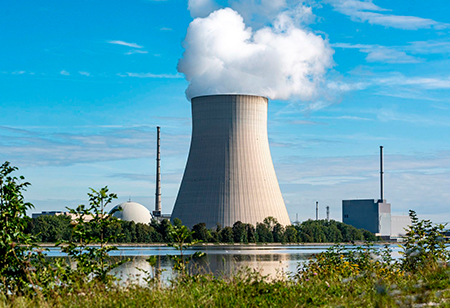
Geothermal Energy: A Permanent Solution to the Energy Transition Crisis?


Since the Paleolithic era, geothermal heating has been utilized for space heating and bathing, respectively, utilizing water from hot springs. Geothermal power, the phrase used to describe electricity production from geothermal energy, has become more significant in recent years. Although only a tiny portion of the earth's geothermal energy is now being effectively utilized, frequently in regions close to tectonic plate borders, it is estimated that the earth's geothermal energy resources are theoretically more than sufficient to meet humanity's energy needs.
Over the 1980s and 1990s, the cost of producing geothermal power decreased by 25 percent due to government-funded research and industry experience. The variety and size of feasible resources have increased as a result of more recent technological advancements that have drastically decreased costs. During 2021, the U.S. Geothermal energy from a power plant constructed today would cost, according to the Department of Energy, roughly $0.05/kWh.
United States Joins Hand with Japan for Geothermal Energy
One of the most abundant resources on this chain of volcanic islands is geothermal energy, and Japan and the United States decided to work together on its development. The Group of Seven energy and environment ministers met, and the memorandum of commitment was signed there. Hokkaido is a city in northern Japan. The legendary hot springs in Japan represent the country's tremendous geothermal activity, but the spas and resorts built nearby have hindered attempts to exploit that resource to produce electricity.
In the agreement that Energy Secretary Jennifer Granholm and Japan's Minister of Economy, Trade, and Industry, Yasutoshi Nishimura, signed, geothermal energy is acknowledged as a renewable energy technology that the United States and Japan can work together to advance. It urges cooperation in information sharing, research, and development, as well as the pursuit of geothermal projects in the United States, Japan, and other nations. The two nations want to work together in several areas to cut back on their dependency on fossil fuels and the carbon emissions that cause climate change.
Granholm stated, "We're quite enthused about working with Japan on these kinds of issues. Although the agreement did not define estimated spending, it did state that each party would be responsible for their own costs. According to a prediction made by the Lawrence Berkeley National Laboratory, increasing geothermal energy might enable Japan to generate 90 percent of its energy from sustainable sources. It would result in a 92 percent reduction in the nation's greenhouse gas emissions.”
The United States and Japan are both attempting to export geothermal technologies. In Indonesia's Sumatra, Japanese companies are working together to construct what is anticipated to be the largest geothermal power station in the world, with 320 gigawatts of electricity. According to the U.S. Energy Information Administration, geothermal energy and biomass both makeup less than one percent of the nation's generating capacity. According to Japan's National Industrial Institute of Science and Technology, the United States has the highest estimated geothermal potential, followed by Indonesia and Japan. However, in terms of installed geothermal power generating capacity, the United States leads the world while Japan is ranked ninth.
To make Japan's supply mix significantly greener, the central government is taking action to reduce red tape in the energy sector. In order to increase the quantity of electricity produced from renewable energy sources, including geothermal, wind, and solar power, regulations will be drastically relaxed, according to officials. Prime Minister Yoshihide Suga set the goal of achieving net zero emissions of greenhouse gasses by 2050, and this action is part of a larger effort to reach that goal.
Geothermal Power Plants in Japan
Geothermal power plants at national and quasi-national parks are one of the deregulatory steps the Environment Ministry is considering. The natural park law now strongly restricts geothermal energy development at specific locations. But by introducing new permit criteria that distinctly outline the conditions for project approval, the ministry hopes to make it much simpler. The change will also enable operators to begin producing geothermal energy after eight years of planning as opposed to the more than ten years it takes under the current arrangement.
In Japan, there are now 62 geothermal power plants in operation, but by 2030, the government wants that number to treble. The regulatory reform initiatives were developed on June 1 by the Regulatory Reform Promotion Council, an advisory body established by the Cabinet Office. Given that achieving the government's net zero emissions goal will require a significant increase in renewable energy production across the nation, the council looked at the current regulations at the request of Taro Kono, the minister in charge of regulatory reform. According to the new regulations, environmental impact assessments will be required for wind power plants that produce more than 50,000 kilowatts. Smaller operators will no longer have to worry about going through evaluation thanks to the change, which lowers the bar for them. At the moment, wind farms with a 10,000 kilowatt capacity must have this assessment.
This rule adjustment is anticipated to lighten the burden on relatively small wind power generators and encourage more new entrants to the market. In March, the agriculture ministry loosened regulations for using solar energy on farmlands. Operators must cultivate agricultural produce underneath solar panels to exploit formerly used acreage for solar power generation. Previously, operators had to guarantee a harvest of at least 80 percent of what would be produced on typical farmlands.
However, they are just now requested to use their farmlands properly and are no longer required to meet a numerical goal. By mandating fewer periods for such projects, the farm ministry will work on further measures to make more farmlands available with little chance of being used for solar generation. The economy ministry intends to introduce a system to make it simpler for companies to acquire electricity produced by renewable energy this year. Public organizations will issue green energy certificates under the method attesting that the electricity was generated from renewable sources.